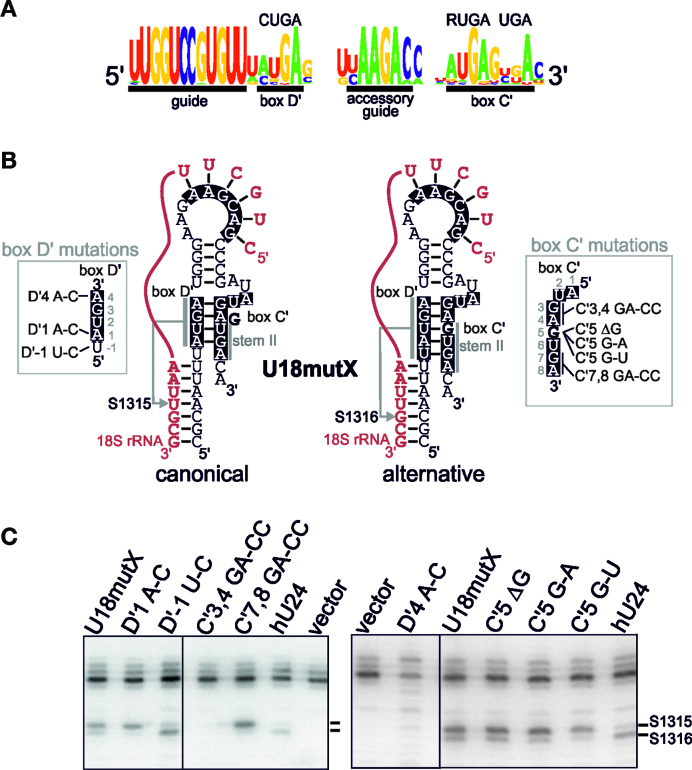Figure 2.
The 5΄ end of box D΄ and the extra nucleotide in box C΄ are both required for multiple site 2΄-O-methylation by the U18 snoRNA. (A) A WebLogo representation of the evolutionary conservation of the guide, D΄ box, accessory guide and C΄ box sequences (as indicated below) of the U18 snoRNA derived from the alignment of all the available yeast U18 snoRNA sequences (24). The consensus C΄ and D΄ sequences are shown above. The diagram was prepared using the WebLogo software (29). (B) Two secondary structure models, one showing canonical base-pairing the other an alternative structure for stem II, of the U18mutX box C΄/D΄ motif and guide sequence, in the context of the artificial snoRNA, base-paired to the 18S rRNA. Note, in the alternative structure a longer, 5 nucleotide box D΄ is used. The U18mutX RNA differs from the wild-type U18 in the sequence of the accessory guide region (Supplementary Figure S1C) that has been altered to base-pair with the 18S rRNA adjacent the region targeted by the artificial snoRNA. The arrows indicate the site modified. The box C΄/D΄ motif and the accessory guide are shown in white on a black background. The positions of the C΄, D΄ boxes and stem II are indicated. The sequence of the box C΄ and D΄ mutants is also shown to the right and left of the structures, respectively. The numbering system used starts at the first position of the canonical box sequence. (C) Plasmids expressing artificial snoRNAs containing the wild-type and mutant U18 C΄/D΄ motifs (as indicated above each lane) were transformed into yeast cells. RNA was extracted from the cells and analysed by primer extension to detect rRNA methylation. The position of the stop corresponding to methylation of the target nucleotides, S1315 and S1316 in the 18S rRNA, are indicated. The levels of the various snoRNAs were determined by Northern blotting (Supplementary Figure S2B).

